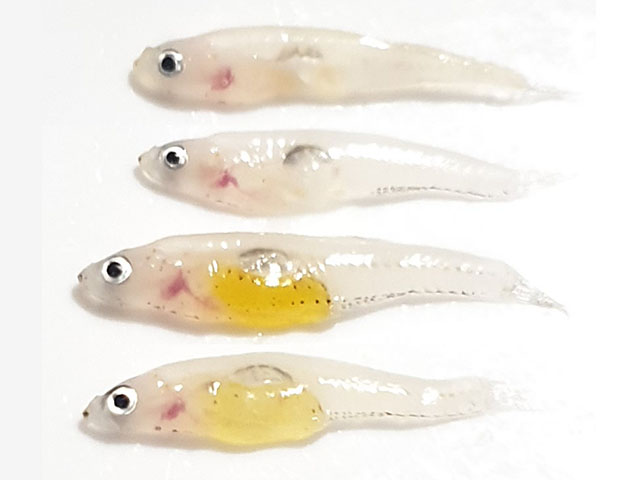| Gobiidae (Gobies), subfamily: Gobionellinae |
| 2.35 cm SL (male/unsexed) |
|
demersal; freshwater |
| Asia: found only in Luzon, Philippines. |
|
Dorsal spines (total): 4-5; Dorsal soft rays (total): 1-7; Anal spines: 1-2; Anal soft rays: 9-8. Adults are transparent or yellowish in color (Ref. 13460). A few black specks on snout and chin present in some specimen, others have specks scattered over back of head and a row along the base of anal fin (Ref. 439). |
| Probably live on or near the bottom in deeper parts of the lake (Ref. 439). Often seen in large schools during the rainy season along the shore (Ref. 439). Females are larger than males (Ref. 439). Cooked with vinegar, fried in cakes, or pickled and stewed (Ref. 439). Also prepared as fish sauce or steamed wrapped in banana leaves (Ref. 13460). |
|
Data deficient (DD); Date assessed: 10 August 2020 Ref. (130435)
|
| harmless |
|
Recorded from Laguna de Bay (Ref. 80824), Paoay creek, Paoay Lake, Butong Lake, Laoag, Ilocos Norte and Lanigay, Polangui, Albay (Ref. 29019). Described from specimens caught in Laguna de Bay, at Calamba, Los Banos, Lumbang, Santa Cruz, Laguna (Ref. 280). The smallest important food fish in Laguna de Bay; caught in large quantities. Statistics by BFAR show dulong production from a high of 555 mt 1990 down to 190 mt in 2002 (Ref. 80730). Prepared as omelets or steamed in banana leaves, or as fish sauce. Museum specimens collected in 1983-84 from various localities, LRS-83113 (Ref. 13460). BMNH 1933.3.11.583-592. |
Source and more info: www.fishbase.org. For personal, classroom, and other internal use only. Not for publication.

